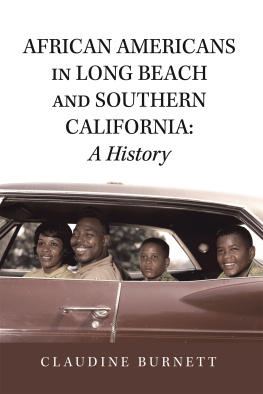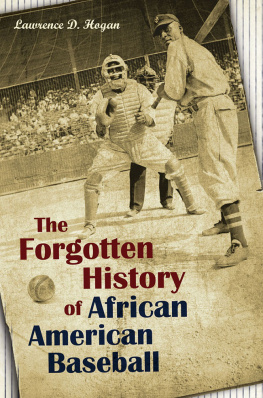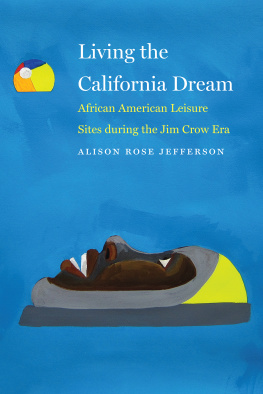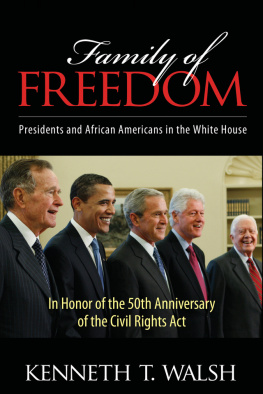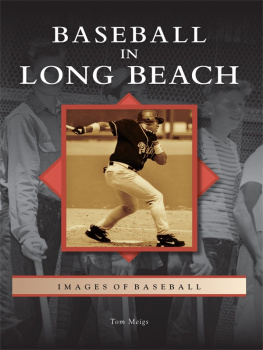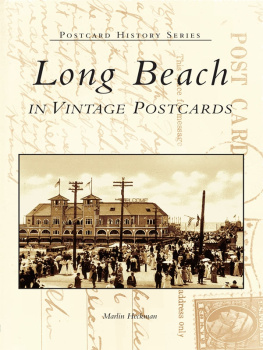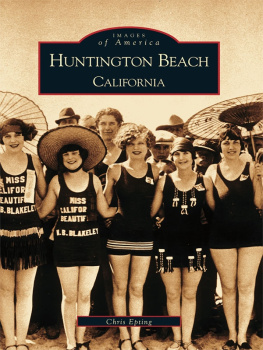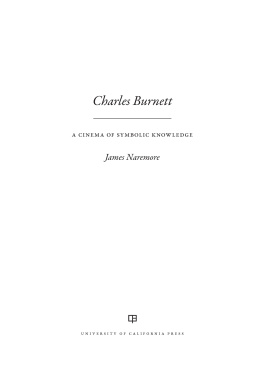Other books by Claudine Bur nett:
Died in Long Beach: Cemetery T ales.
Fighting Fear: Long Beach in the 1 940s.
From Barley Fields to Oil Town: a Tour of Huntington Beach, 1901- 1922.
Haunted Long B each.
Haunted Long Bea ch 2.
Murderous intent? Long Beach, CA. 1880s- 1920.
Prohibition Mad ness.
The Red Scare, UFOs and Elvis: Long Beach enters the atomic age.
Soaring Skyward: A History of Aviation in and around Long Beach , CA.
Strange Sea Tales Along the Southern California C oast.
Jointly with other aut hors:
Surfing Newport Beach: the Glory Days of Corona del Mar. With Paul Bur nett.
The Heritage of African Americans in Long B each.
In association with the African American Heritage Society of Long Beach, Aaron L. Day and Indira Hale Tu cker.
Balboa Films: a history and filmography of the silent film studio. With Jean- Jacques Jura and Rodney Norman Bardi n II.
www.claudineburnettbooks .com
African Americans
in Long Beach and
Southern California:
A History
Claudine Burnett

AuthorHouse
1663 Liberty Drive
Bloomington, IN 47403
www.authorhouse.com
Phone: 833-262-8899
2021 Claudine Burnett. All rights reserved.
No part of this book may be reproduced, stored in a retrieval system, or transmitted by any means without the written permission of the author.
Published by AuthorHouse 03/09/2021
ISBN: 978-1-6655-1679-2 (sc)
ISBN: 978-1-6655-1678-5 (e)
Any people depicted in stock imagery provided by Getty Images are models,
and such images are being used for illustrative purposes only.
Certain stock imagery Getty Images.
Because of the dynamic nature of the Internet, any web addresses or links contained in this book may have changed since publication and may no longer be valid. The views expressed in this work are solely those of the author and do not necessarily reflect the views of the publisher, and the publisher hereby disclaims any responsibility for them.
Race matters for reasons that are really only skin deep, that cannot be discussed by any other way, that cannot be wished away.
Race matters to a young mans view of society when he spends his teenage years watching others tense up as he passes, no matter the neighborhood he grew u p in.
Race matters to the young womans sense of self when she states her hometown and then is pressed, No, where are you really from? regardless of how many generations her family has been in this cou ntry.
Race matters because of the slights, the snickersthe judgments that reinforced the most crippling of thoughts: I do not belong here.
Justice Sonia Sotomayor
Shuette v. BAMN 2014
Contents
This book centers on the African American population of Long Beach, California, though the role and treatment of blacks in other Southland cities and across the nation is also explored. It begins in the 1800s and continues to 1970, reaching into later years to describe what that history has led to today. The book tells the story of Long Beach, its African American population and intertwines legislation that has affected racism in this country.
My five years of research through recently digitized African American newspapers ( California Eagle, Los Angeles Sentinel, Liberator) and microfilm copies of the California Informer allowed me access to the black perspective on issues rarely written about in the white press. What became frustrating were the missing newspapers that would have added much to the history. The 1932 Olympics is one example. Prior to the 1932 Olympics the California Eagle offered to sponsor any black athlete who needed assistance. All who expect to run, box, swim, jump, wrestle or compete in any of the many divisions were invited to register with the Eagle . The Eagle vowed to be a headquarters for black athletes from all over the world. It asked African American youth to get busy, build up their bodies and register with the Eagle so the newspaper could tell the world their story. Unfortunately, copies of the newspaper with the stories were not preserved.
Besides newspapers, other primary sources such as census reports, death certificates, city directories, and building permits were used. The Historical Society of Long Beach also contributed greatly, sharing research conducted for the Societys annual cemetery tour, and photos from their collection. I cannot thank them enough.
Much appreciation to Long Beach Public Library and its staff (Glenda Williams, Jeff Whalen, Susan Jones, Angela Scott, Jade Wheeler, Michael Martin, and others) for their help in securing photos, research, and maintaining the Long Beach History Index (found on the librarys website), covering the beginning of Long Beach in 1881 to the early 21 st century.
I thank my support staff, Dr. Kaye Briegel of California State University, Long Beach, Roxanne Patmor of the Historical Society of Long Beach, and Aaron Day of the Long Beach NAACP. I also want to acknowledge Zadie Cannon of the Christ Second Baptist Church, the CSULB Black Student Union Elders Association for their input on events in the Anthony Wilkins story, Steve Propes for sharing information about Ty Terrell and the Robins, and Charles Brown, Special Advisor, Long Beach 8 th District Council Office, for contributions to the Achieving Success portion of the book.
Claudine Burnett
February 2021
Most towns throughout America have a history of racism and Long Beach is no exception. Early Long Beach has been characterized as a city of almost puritanical valuesa church going citizenry that allowed no alcohol and practiced conservative ideals.
It was founded and settled by Bible belt, white, Midwesterners, conservative in their political and social views. It was famous for having the largest Bible study group in the nation and its draconian purity ordinancesmaking it illegal to wear a bathing suit that didnt have skirts, sleeves or was too short or too tight.
Though the many churches in town preached tolerance and acceptance of blacks and other minorities, the truth was they did not want them living anywhere near them. Property values going down, was the most often cited reason for this exclusion, not outright racism. Deeds to property were later written to exclude blacks from purchasing homes in the community, though some did so in an outlying area close to the city called the Negro District (later Central Long Beach). From here they could find employment in the white community as cooks, maids, chauffeurs, and other positions whites did not want.
White settlers to Southern California neglected to see that the region was largely colonized by those with African blood. After Spain entered the slave trade in the 15 th century, African, indigenous, and European blood comingled and many of those with mixed blood were recruited into the Spanish armed forces as conquistadores.
Though the practice of slavery in Mexican territories was abolished in 1829, their racially mixed descendants were behind the colonization of California in the 18 th century. The Franciscan historian Palou recounts that the first Christian burial with the rites of the holy Catholic Church in California was given to a dead man with black blood. Of the forty-four original founders of the city of Los Angeles, twenty-six were of African and Mestizo descent. In fact, recent DNA studies reveal most Mexicans today have a small amount of DNA dating back to African slave ancestors who had mixed into the predominant Mexican heritage gene pool, averaging to about 5% Sub-Saharan African DNA, according to a 2014 study reported by Randal Archibold in the New York T imes .
In Northern California, African Americans, many still slaves, helped garner the gold that brought more and more immigrants to the Golden State. Whereas Northern California was pro Union during the Civil War, the Southland was a hotbed of Southern sympathizers and not the most welcoming of places for African Americans to settle. It would not be until the 1880s that a small number of African Americans began to migrate to Southern California. From 188 African Americans in Los Angeles County in 1880, the number increased to 1,817 in 1890; to 2,841 in 190021 of them living in Long Beach. 1880 was also the year that the community later to be known as Long Beach came into being.
Next page
